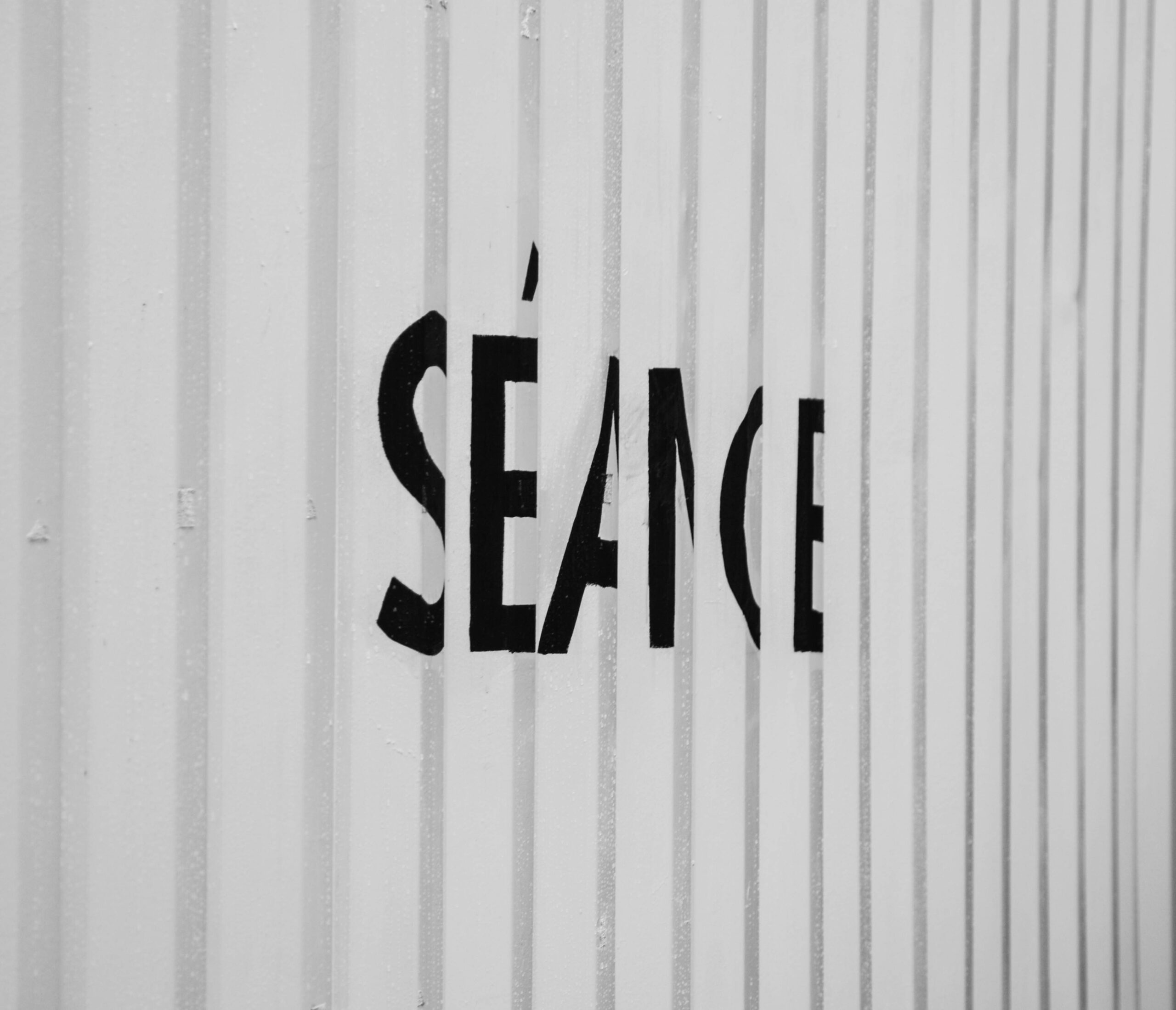Glen Neath, co-Artistic Director of Darkfields, writes about the process and inspiration behind Séance, and how the project evolved.
David Rosenberg and Glen Neath have been working together for about 12 years, seven of them as Darkfield, and have used binaural sound and darkness in all of their work together.
Binaural is just a particular way of recording that uses two microphones in a dummy head to approximate the real life experience we all have when we hear something. In effect it creates a 360 degree world of sound, around a listener, that feels very real when it is listened back to through headphones. So, if you can imagine this idea of a 360 degree world created through sound and then imagine it played back to you through headphones in the dark, you can begin to imagine how we can play with people’s perception of what is really happening in the space they are sitting in. We then create a fictional version of the space where the story is happening, and in that fictional space other audience members seemingly engage with characters who have entered into the recorded space. Binaural sound is very effective in enabling us to blur that boundary between what seems to be real and what is not real. If you can introduce doubt you can keep the listener active in the experience, as they wonder if and how they will be expected to join in.

All our work plays with the idea that each audience member is at the centre of an evolving narrative. We do not write plays and stage them, each piece is constructed with the audience member front and centre – we consider what sounds will be most effective, and talk a lot about how we can construct something that each participant feels is particular to them. Binaural sound is effective with this because it can create a very intimate relationship between the listener and the content. We can effectively whisper in everybody’s ear at the same time and so create a story that plays with the proximity of each and every participant to the action. Everyone feels special but is actually receiving the same experience as everyone else.
We don’t think the shows we make are really conducive to traditional linear narratives, and whilst you gain something by placing the audience at the heart of the story this brings with it limitations. The technology works best when nothing is asked of the listener, so we do not ask them to play a part, to be a character in a story, as this places a barrier between them and the experience. We always try to leave space in the story for them to put themselves into.
Our process of creating a show often begins, not as a story idea we would like to explore, but as an idea around an audience configuration – this was the starting point for Séance.
When we had the idea of two rows of audience for Séance we decided to have a table in between them, and the table suggested a séance, and only then did the eventual subject matter become the primary drive behind the ongoing process. When we have a design idea, or a sense of what the story might be, the special effects often suggest themselves. As soon as we had decided that the story of Séance was the attempted summoning of a spirit it was obvious that we should have a moving table. We work with many tools when we create our experiences, the text works together with the darkness, the sound, the set and the effects – and each is given equal importance.
As the stories are created to revolve around the audience member we have no place for a character’s back story – the protagonist is the audience member who brings their own particular set of fears and interests to the party, and we see it as our job to leave the narrative open enough for them to be able to express themselves without feeling out of sync with ongoing events.
Everybody who does one of the shows has a very different experience because the conditions they are placed under are relatively extreme – the darkness is very dark and very particular for everyone … of course some people are scared of the dark, and the shows work best for those people who submit; people with a cynical approach – non-believers – will end up sitting in the dark for twenty minutes telling themselves nothing of what they feel happening around them is really happening. So, we suggest you believe.
(image credits: Fiona Rita Blyth)












